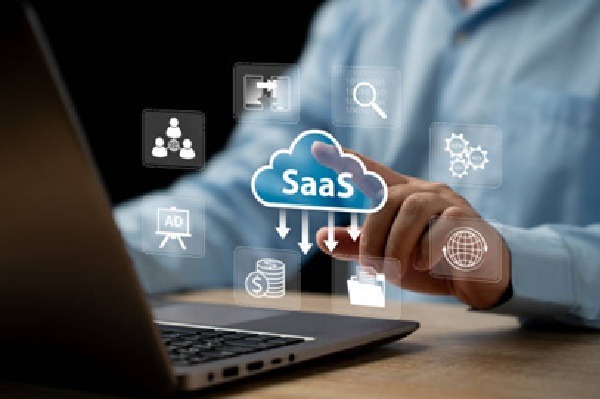What happens when your software is not only intelligent but also decisive? Agentic AI is driving SaaS platforms across that boundary. Instead of waiting for user input, these systems act as proactive partners – executing complex tasks, optimizing workflows, and making real-time decisions that directly influence business outcomes. This evolution has the potential to redefine entire industries.
In this article, we examine how agentic AI is transforming SaaS platforms, the benefits it offers, and the challenges organizations must overcome to adopt it successfully.
What is SaaS?
Software as a Service (SaaS) is a delivery model in which applications are hosted in the cloud and accessed over the internet, typically through a web browser or mobile application. The provider handles installation, updates, and infrastructure, while customers pay a subscription fee. This model eliminates operational overhead, making SaaS the dominant standard for modern software.
What is Agentic AI in SaaS?
Agentic AI refers to systems capable of independent decision-making and action. Within SaaS, it marks the shift from reactive to proactive intelligence.
Traditional AI analyzes data, provides recommendations, and executes only within predefined workflows. It is essentially reactive, waiting for prompts or triggers before acting. Agentic AI, by contrast, is proactive. It sets or interprets goals, anticipates needs, and takes autonomous action to achieve outcomes. Instead of simply flagging a potential issue, agentic AI identifies the problem, resolves it, and reports back on the action taken.
In customer support, for example, traditional AI may notify a team when a customer is at risk of churning. Agentic AI goes further – it detects the churn risk, generates a personalized retention offer, sends it directly to the customer, and updates the CRM automatically. In security, traditional AI raises an alert on suspicious login activity, while agentic AI blocks the attempt, resets the credentials, and notifies stakeholders in real time.
Another difference is adaptability. Traditional systems must be retrained or reprogrammed by humans, while agentic AI learns from evolving data and experience, adjusting its approach without intervention. This reduces the need for constant oversight and speeds up responses dramatically – from hours in a traditional setup to seconds with agentic AI.
Ultimately, traditional AI is best suited for decision support and automating repetitive tasks, while agentic AI thrives in dynamic, complex environments where real-time intervention is crucial. Traditional AI improves efficiency but still depends heavily on humans to execute decisions, whereas agentic AI delivers measurable results through independent action combined with valuable insights.
Benefits and Competitive Advantages
Integrating agentic AI into SaaS platforms unlocks transformational value:
Productivity boost – Teams focus on strategy while AI handles monitoring, optimization, and execution.
Personalization – Systems adapt to user patterns, altering interfaces, prioritizing data, and recommending workflows automatically.
Cost savings – AI identifies resource inefficiencies that are invisible to human operators, significantly reducing operational costs.
Scalability and resilience – During spikes in demand, agentic AI autonomously scales resources, reallocates tasks, and sustains performance without manual oversight.
Faster decisions – By analyzing real-time data streams, AI predicts outcomes, issues early warnings, and acts before risks escalate.
Challenges and Considerations
Adopting agentic AI is not without obstacles:
Trust and explainability – Autonomous actions must be transparent to earn user confidence.
Ethical boundaries – Companies must define actions that AI should never take without human approval.
Data privacy and governance – AI must meet HIPAA, GDPR, and other regulatory standards while acting across connected systems.
Change management – Teams must adapt to sharing operational control with autonomous systems.
Conclusion
Agentic AI marks a new era in SaaS, where platforms evolve from passive tools into active collaborators. They anticipate, decide, and act – accelerating work and elevating strategy.
The companies that embrace this shift now will build smarter, more resilient platforms that outpace competitors. The question is no longer whether agentic AI will shape next-gen SaaS, but how ready your organization is to work alongside it.


